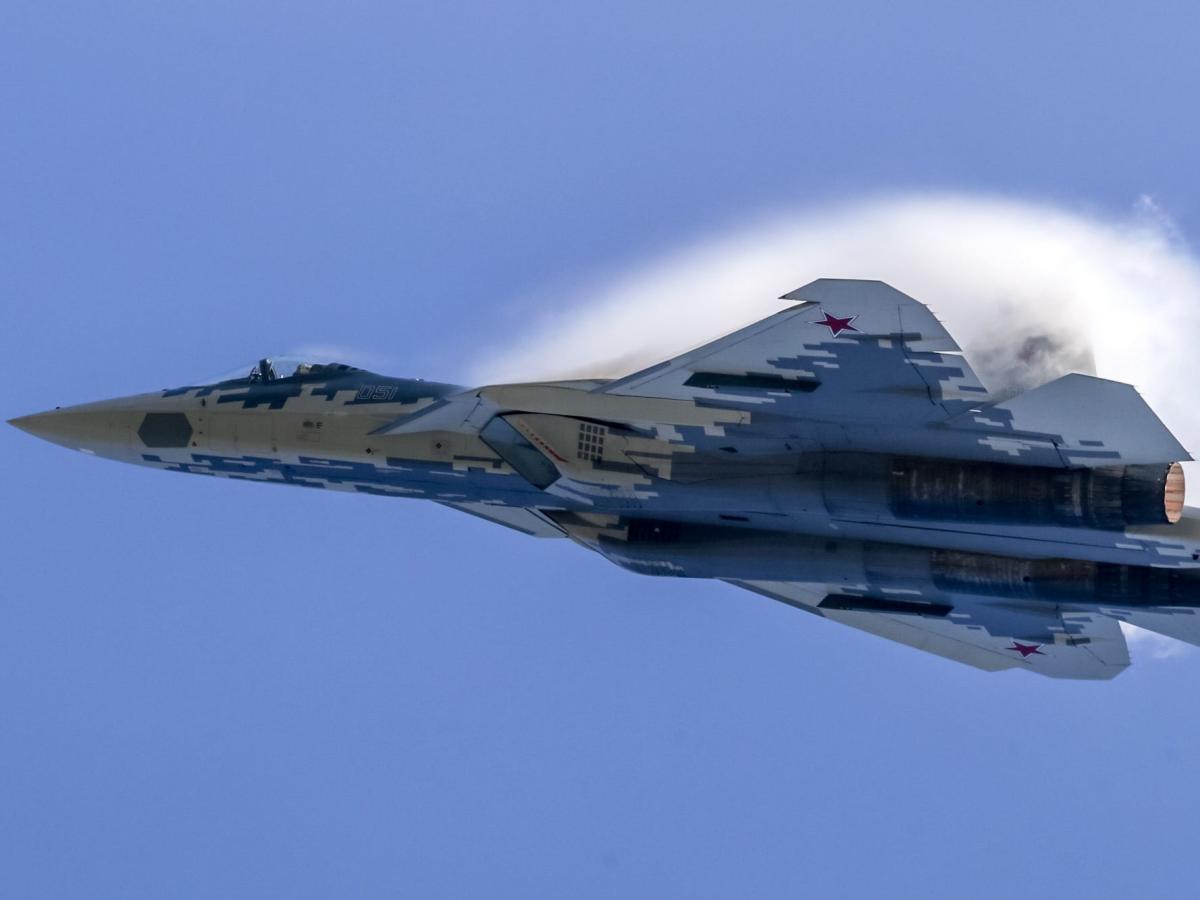-
Ukraine has shown that its drones can attack advanced aircraft on air bases in Russia.
-
Ukraine appears to be systematically attacking air bases with drones.
-
Cheap drones could be a way to hit back at the Russian fighter jets that bombarded Ukraine with glide bombs.
A recent Ukrainian drone strike appears to have damaged one, possibly two, of Russia’s rare stealth fighters at an air base deep inside Russia, highlighting a problem for Russia’s air force.
No matter how many planes there are, those planes have to be parked somewhere. And even hundreds of kilometers inside Russia, those air bases can be attacked by cheap drones.
“Kiev appears to be pursuing a clear strategy to force the VKS either to abandon its bases within several hundred kilometers of Ukraine’s borders or to dedicate an excessive amount of air defense systems to their defense,” Justin Bronk, an air force expert, wrote in an essay . for the Royal United Services Institute, a British think tank.
Where to station fighter planes is always a dilemma. The closer they are to the front lines, the more ammunition they can carry instead of fuel, and less time is wasted flying back and forth from the base to the battlefield. But this leaves them open to missile and drone attacks, as Ukraine demonstrated in 2022 and 2023 with attacks on Russian planes and helicopters on the ground, many of which were parked at airfields close to the Ukrainian border, while others were located deeper found in Russia.
But these were pinprick attacks designed to embarrass the Kremlin and demonstrate that nowhere in Russia is safe from a Ukrainian attack. Now Ukraine appears to be systematically attacking air bases with drones, just as it used American-made HIMARS long-range missiles to dismantle Russian logistics and command networks in 2022.
There are unclear details about what exactly happened to the Su-57 (NATO reporting name: “Felon”) stealth fighters parked at the Akhtubinsk air base in southern Russia, near the city of Volgograd (formerly Stalingrad) and about 600 kilometers from Ukrainian territory. Ukrainian intelligence released images earlier this month that appeared to show a Su-57 – parked in the open – reportedly damaged by Ukrainian long-range drones, and a top official claimed a second may have been damaged in the same attack.
“It is unclear how much damage the Su-57 in question sustained,” Bronk noted. “The satellite photo appears to suggest that two relatively small explosions occurred within a radius of approximately 3 to 5 meters [10 to 16 feet] of the aircraft, which was parked on a concrete stand outside.”
The aircraft did not appear to catch fire, indicating that the damage was not catastrophic, as might be expected from small drones with small warheads. On the other hand, the plane appeared to have suffered damage to the nose and tail, which is no small matter for vulnerable, high-performance aircraft.
“Shrapnel damage to the rear section would be relatively easy to repair with an engine change and replacement horizontal and vertical stabilizers, but shrapnel damage of any significance to the nose section would be much more serious,” Bronk wrote. “It would likely cause damage to the radar array(s), infrared scanning and tracking sensor and cockpit, as well as instruments and electronic systems critical to the operation of the entire aircraft.”
An interesting question is why the drones were not neutralized by Russia’s vast jamming capability, which has neutralized many Western-supplied GPS-guided missiles and hover bombs and disabled countless Ukrainian radio-controlled drones. Taking advantage of the Soviet Union’s massive investments in electronic warfare, Russia has used mobile and fixed jammers to saturate the airwaves along its 550-mile front line. The attack in Akhtubinsk suggests that Russia’s electronic warfare capability is broad enough to cover the front, but not deep enough to protect Russia’s interior.
In itself, the recent Ukrainian attack was little more than a symbolic blow against a symbolic enemy. Russia may have a dozen Su-57s, Moscow’s answer to America’s F-22 and F-35 stealth fighters. Like the acclaimed Russian T-14 Armata, the Su-57 was conspicuous by its absence from the war in Ukraine. This likely reflects a fear of embarrassment from losing an advanced weapon – and perhaps a lack of confidence that the capabilities of these weapons will not match the rhetoric.
What has hurt Ukraine over the past six months is the huge numbers of glide bombs dropped by older Su-34 and Su-35 jets. Stealth fighters are not necessary for Russia’s non-stealth strategy: destroy Ukrainian defenses with glide bombs, then send poorly trained convict infantry to mop it up. It is a crude, costly approach that has nevertheless allowed Russia to seize some small pockets of territory.
Even with American-made F-16 fighters arriving soon, the Ukrainian air force is unlikely to be able to repel Russian fighter jets dropping glide bombs from 50 miles behind Russian lines, safely behind ground air defenses. Cheap drones for one-way attacks may be the best alternative.
Michael Peck is a defense writer whose work has appeared in Forbes, Defense News, Foreign Policy magazine and other publications. He has an MA in Political Science from Rutgers Univ. Follow him further Tweet And LinkedIn.
Read the original article on Business Insider







